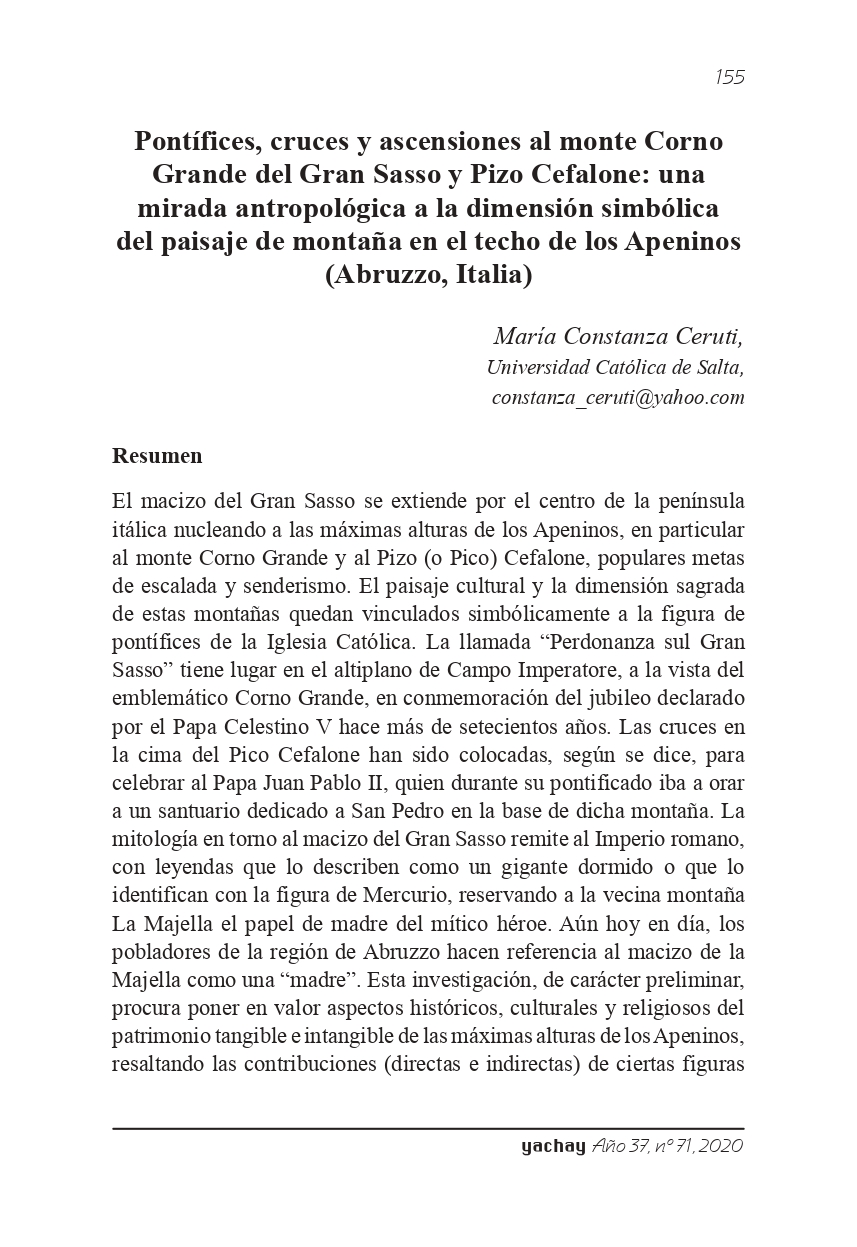Pontificals, crosses and climbing Mount Corno Grande of the Gran Sasso massif and Pizo Cefalone: an anthropological consideration of the symbolic dimension of the mountain scenery in the Apennine roof (Abruzzo, Italy)
DOI:
https://doi.org/10.35319/yachay.20207119Keywords:
Apennines, Gran Sasso, landscape, religiosityAbstract
The Gran Sasso massif runs along the center of the Italic peninsula
encompassing the highest elevations of the Apennine range. Mount
Corno Grande and Cefalone Peak are among the most popular
destinations for mountain climbing and hiking. The cultural landscape
and the sacred dimension of these mountains are symbolically connected
to pontifical figures of the Catholic Church. The ceremony known as
“Perdonanza sul Gran Sasso” takes place in the high plateau of Campo
Imperatore, in full view of the emblematic Mount Corno Grande, to
commemorate the Jubilee declared by Pope Celestino V nearly seven
hundred years ago. The crosses on the summit of the Cefalone Peak
have been planted to celebrate the memory of Pope John Paul II, who
used to pray at a shrine dedicated to Saint Peter, built at the foot of this
mountain. Myths around the Gran Sasso massif link it to the Roman
Empire, with legends that associate it with the figure of Mercury, or
describe the mountain as a sleeping giant, while the neighboring peak
of La Majella is designated as the mythical hero’s mother. Even to these
days, rural residents in the province of Abruzzo refer to La Majella
as a “mother”. This preliminary investigation considers historical,
cultural and religious aspects of tangible and intangible elements of
the mountain heritage of the high Apennines, emphasizing the direct
and indirect contributions of certain pontifical figures of the Catholic
Church in the construction of the religious dimension of the Gran Sasso
massif, from medieval times until these days.
Downloads

Downloads
Published
How to Cite
Issue
Section
License
Copyright (c) 2020 Revista Yachay

This work is licensed under a Creative Commons Attribution-NonCommercial 4.0 International License.
De acuerdo a la Ley 1322 de Derechos de Autor en Bolivia, la Revista YACHAY respeta los derechos morales de los autores, amparando la parternidad e integridad de sus obras publicadas.




